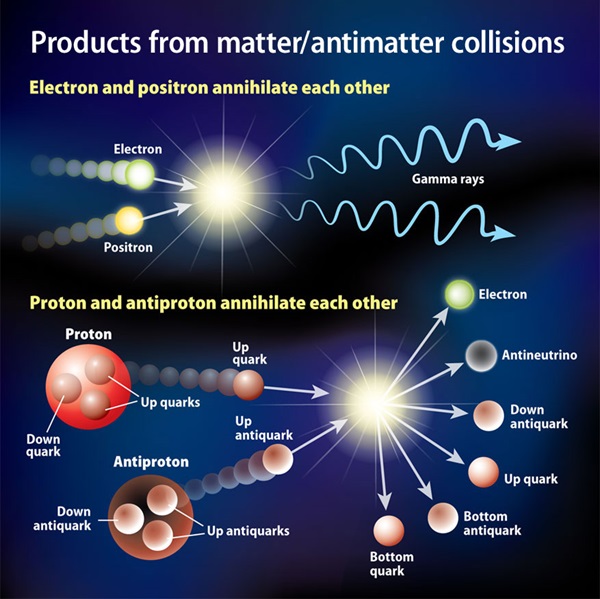In modern physics, antimatter is defined as matter that is composed of the antiparticles (or “partners”) of the corresponding particles of “ordinary” matter. Minuscule numbers of antiparticles are generated daily at particle accelerators – total production has been only a few nanograms (ng)– and in natural processes like cosmic ray collisions and some types of radioactive decay, but only a tiny fraction of these have successfully been bound together in experiments to form anti-atoms. No macroscopic amount of antimatter has ever been assembled due to the extreme cost and difficulty of production and handling. Theoretically, a particle and its anti-particle (for example, a proton and an antiproton) have the same mass, but opposite electric charge, and other differences in quantum numbers. For example, a proton has positive charge while an antiproton has negative charge.
Antimatter was one of the most exciting physics discoveries of the 20th century. Picked up by fiction writers such as Dan Brown, many people think of it as an “out there” theoretical idea – unaware that it is actually being produced every day. What’s more, research on antimatter is actually helping us to understand how the universe works.
Antimatter is a material composed of so-called antiparticles. It is believed that every particle we know of has an antimatter companion that is virtually identical to itself, but with the opposite charge. For example, an electron has a negative charge. But its antiparticle, called a positron, has the same mass but a positive charge. When a particle and its antiparticle meet, they annihilate each other – disappearing in a burst of light.
Such particles were first predicted by British physicist Paul Dirac when he was trying to combine the two great ideas of early modern physics: relativity and quantum mechanics. Previously, scientists were stumped by the fact that it seemed to predict that particles could have energies lower than when they were at “rest” (i.e. pretty much doing nothing). This seemed impossible at the time, as it meant that energies could be negative.


